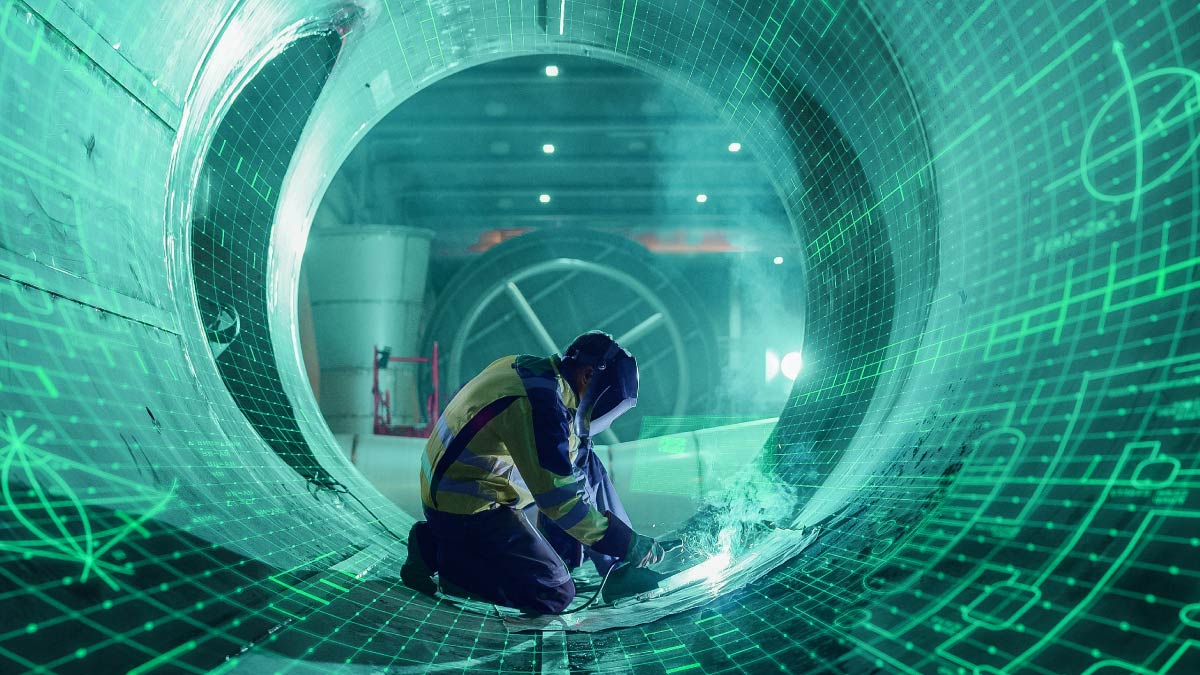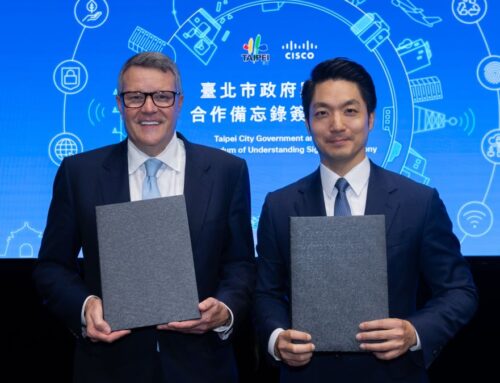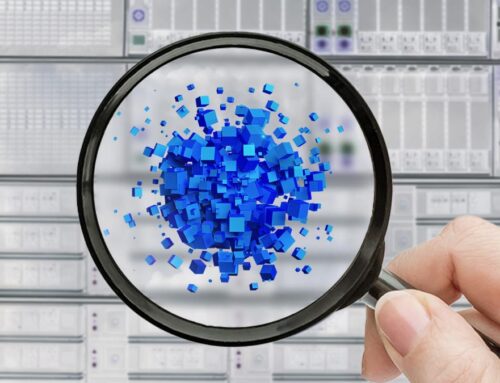By striving to bring together sustainability, the internet, and cybersecurity, we hope to support equitable, secure and reliable internet access, and create a more inclusive and resilient society.More RSS Feeds: https://newsroom.cisco.com/c/r/newsroom/en/us/rss-feeds.html
Cisco Newsroom: Security By striving to bring together sustainability, the internet, and cybersecurity, we hope to support equitable, secure and reliable internet access, and create a more inclusive and resilient society.More RSS Feeds: https://newsroom.cisco.com/c/r/newsroom/en/us/rss-feeds.html Read More
Cybersecurity, sustainability, and the transformative power of the internet
The Scope of Sustainability
When you think about ‘sustainability’, you are likely to think about global efforts to tackle climate change and reduce carbon emissions.
Do you think about the internet or cybersecurity? It’s important that we do.
Sustainability includes protecting the environment, alongside strategies regarding poverty; economic growth; education; health; social protection; job opportunities; and other social needs. The internet has a significant role in connecting us to these strategies. And, to the future.
The internet has become part of every nation’s critical infrastructure – like water, healthcare, or transport – that keeps our societies moving forward. It connects us to each other, to our food networks, medical care, education, banking systems, jobs, and other means of improving the quality of our lives today and for future generations. That is why cybersecurity is important for sustainability.
By striving to bring together sustainability, the internet, and cybersecurity, we hope to support equitable, secure and reliable internet access, and create a more inclusive and resilient society.
The Upward Trajectory of Digital Life
The internet is the lifeblood of our digitally connected world. In 2021, the number of mobile devices in the world stood at approximately 14.9 billion. By 2025, that is expected to increase by another 4.2 billion devices or a 14% increase. And, over the next decade, across Europe, the Middle East and Africa (EMEA), according to the broadband survey, we expect to see around 74% of homes becoming ‘smarter’, with life becoming even more digitally connected as the Internet of Things (IoT) marketplace grows. In a recent Cisco survey, more than half of the respondents (54%) see the positive impact of discovering new ways to connect their homes and lives to the internet. But, what about the billions of people around the world who aren’t connected?
As the internet becomes increasingly central to life, progress, and national infrastructure, it is crucial that we collectively address the challenges of fair access within a broader understanding of sustainability. By connecting the unconnected, we can empower the world’s underserved communities with access to education, healthcare, banking, and job opportunities. Technology can power an inclusive future for all, and we need to work together to prioritize and invest in sustainability and secure solutions. If left unchecked, the ever-expanding web of people, data, and devices connected by – and to – the internet risks placing a greater strain on our environment and disrupting communities around the world.
The Internet has a Carbon Footprint
Our digital habits impact the environment. According to the International Energy Agency, data centers alone consume 1-1.5% of global electricity use, while online devices, the internet, and supporting systems contribute to an estimated 2.1-3.9% of global greenhouse emissions.
Although 75% of EMEA workers we surveyed are aware that the internet has a carbon footprint, only a third (34%) can explain it, and only a quarter are taking steps to curb it. Moving towards sustainability in the internet is the right thing to do, and there is customer demand for it. Around 77% of people in EMEA are willing to pay for broadband with a lower carbon footprint, with a quarter willing to pay a premium of over 20%. Sustainability in broadband is also a top priority for the 21% of people looking to upgrade over the next 12 months.
There are significant opportunities for service providers and their customers to build trust and grow, especially if they equally focus on cybersecurity.
A Cybersecurity Paradox
As digital life expands, failing to protect our broadband infrastructure could compromise network and national resilience, escalate cyber threats, and bring both ‘digital’ and ‘real’ life to a grinding halt. According to the Cisco Cybersecurity Readiness Index, “almost 60% of respondents said they had experienced some kind of cybersecurity incident in the last 12 months. The incidents cost 71% of affected organizations at least US$100,000, with 41% of those affected saying the overall cost was US$500,000 or more.”
But, while more than half of internet users (57%) are worried about cyber criminals hacking their devices, word of mouth (39%) and common sense (35%) are the dominant influences on online and device security behavior. Indeed, ‘passwords’ are still the most popular (53%) way to protect home broadband. Just as we saw with the internet’s carbon footprint, there is a gap between what customers want, what they know, and how they act. Services Providers and companies like Cisco are uniquely positioned to help customers protect their digital lives and build resilience through a combination of cybersecurity solutions and better practices as we will further describe below.
A Blueprint for the Security and Sustainability of the Internet
We are already working with Service Providers and partners around the world to support security and sustainability in the internet using more energy-efficient solutions, and setting new industry standards. We are focusing on the Internet for the Future: more energy-efficient data centers, and networking solutions that resist possible ‘rebound effects’ – where producing the technology we need to track and manage emissions could add to the climate burden. We are working to design the materials, products, systems, and commerce of our digital world to reduce energy consumption and waste, and provide visibility and actionable insight into our carbon footprint. Smart buildings, sustainability in design, better use of real estate, and unleashing the potential of hybrid work can be powered by appropriate consideration of sustainability in the internet.
Collaboration and innovation among stakeholders, from businesses to researchers, is fueling a sustainability and digital revolution with cybersecurity top of mind. We are working with Service Providers to prioritize and invest in security technologies and practices. Governments are developing goals and incentives that can shift customers to sustainability in the internet. And, we are already empowering the next generation of technology professionals to protect and build on these digital foundations.
Empowering the Next Generation
Through education and skills development, our Networking Academy aims to train 10 million new workers over the next 10 years, with a special focus on developing regions like Africa. By partnering with the International Telecommunication Union (ITU) on the global Digital Transformation Centers initiative, we have already trained 170,000 beneficiaries living in remote and underserved communities in 13 developing countries.
We can help bridge the digital divide while supporting our global society with the specialized skills needed to navigate our increasingly connected world. Together, we can Power an Inclusive Future for All.
Sustainability, Innovation and Solutions
Together with our partners, communities, and customers, we are focused on innovating for sustainability, offering holistic solutions that can support organizations to transform their operations, mitigate their environmental impact and promote inclusion. Our solutions can promote sustainability without compromising security:
Sustainability and Data Centers: Cisco’s Nexus Cloud and Intersight provide real-time visibility of energy consumption and workload orchestration, optimizing operations and reducing the overall energy footprint.
Simplifying the Network: Networks that have grown over time to transfer more and more data at greater speeds can be quite complex. With Routed Optical Networking (RON) from Cisco, organizations can converge the routing and optical layers of their networks and simplify them. This can lead to a 5x reduction in power consumption, and reduced space requirements (up to 70%) and embodied carbon.
Energy Efficient Infrastructure: The Nexus 9800 series and UCS-X series showcase our commitment to sustainability with energy efficiency improvements. We have designed these advanced systems to reduce energy consumption, and the amount of hardware and raw materials.
Smarter Buildings and Systems: Customers can decrease energy consumption by 20-50% when they adopt sustainable building practices that lower cooling demands, like hot aisle containment, psychrometric charts, PUE monitoring and automated environmental control enabled by Meraki MT sensors.
Hybrid Work: Our Webex suite of tools promotes sustainability in business practices through features such as Office Hours, Hot Desking, and the Webex Room Bar. The Webex Room Bar uses presence detection to adjust heating and cooling systems for optimal energy efficiency. These innovations can save energy, reduce waste, optimize real estate usage, and create a seamless hybrid work experience.
We have woven security into solutions, protecting against the ever-evolving threat of cyberattacks, and, together with our partners, communities, and customers, are focused on innovating for sustainability and solutions.















